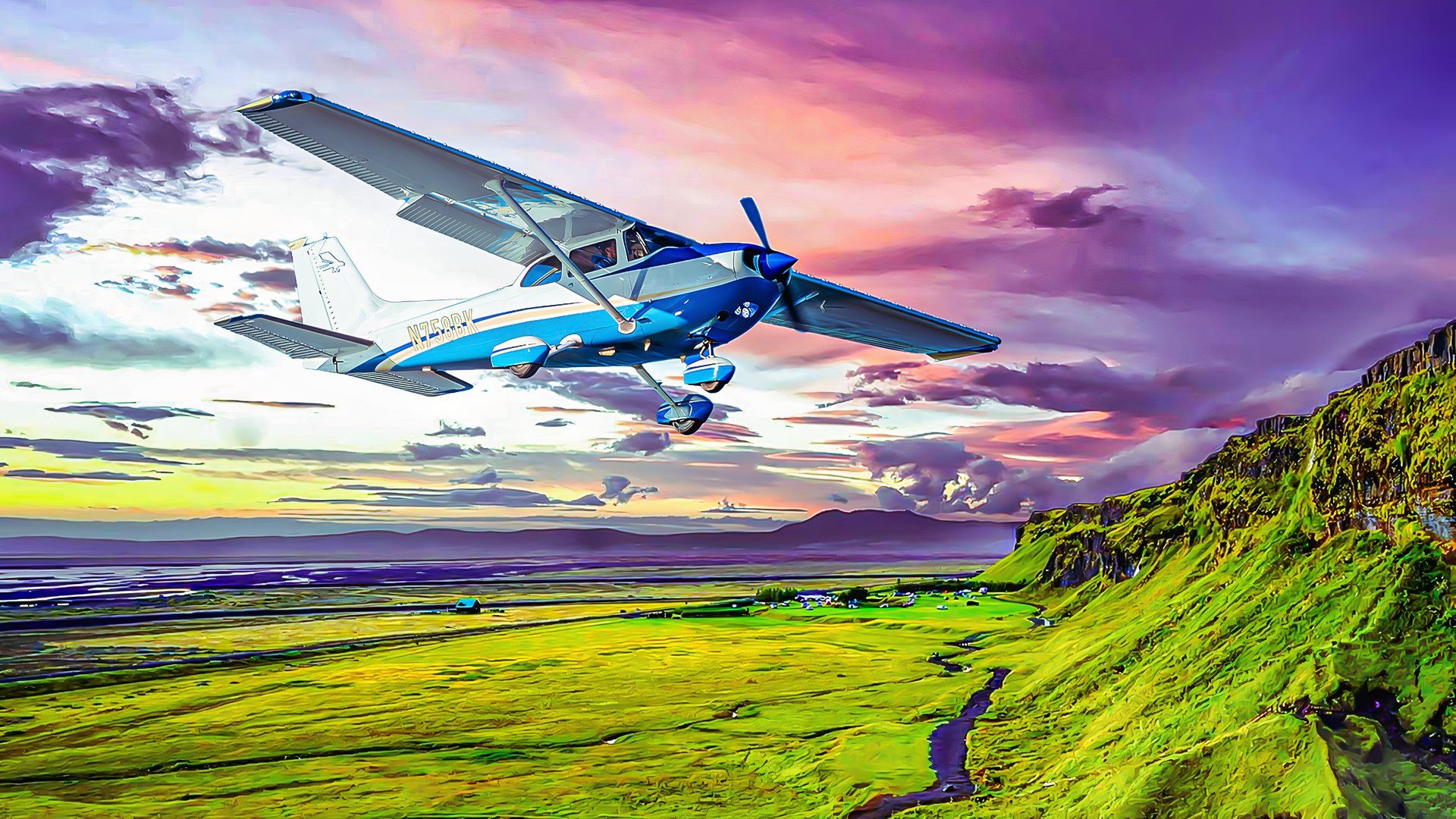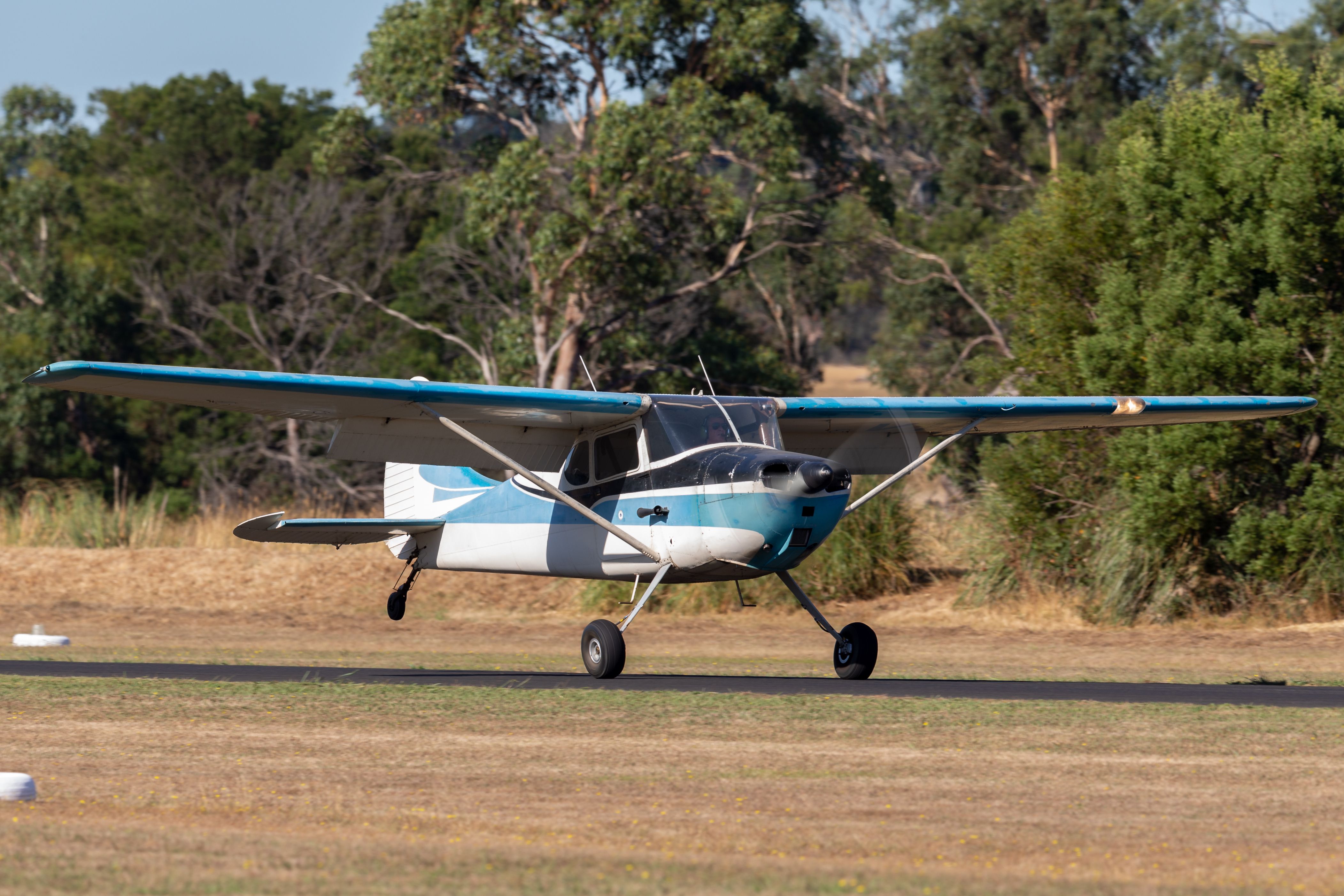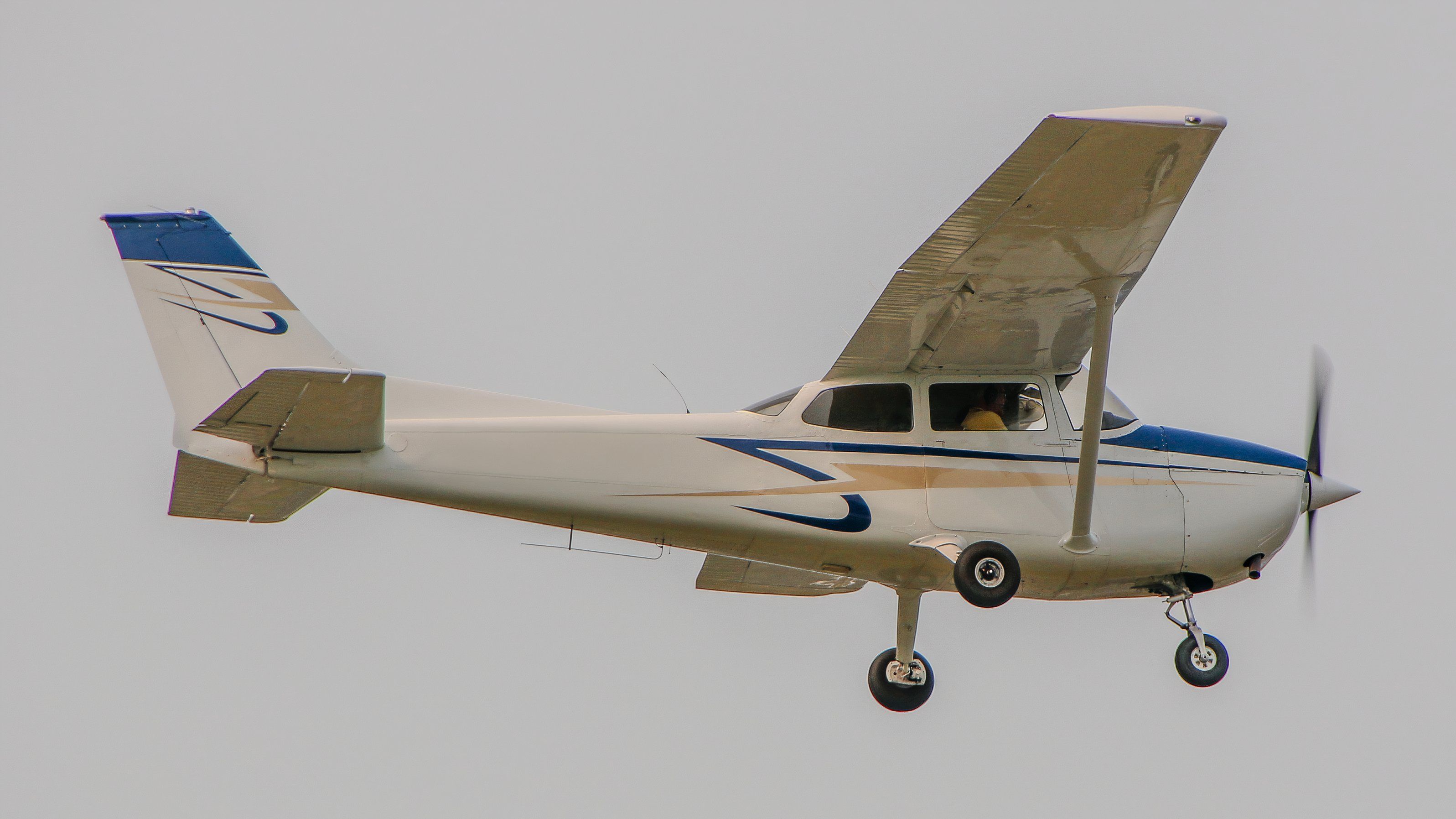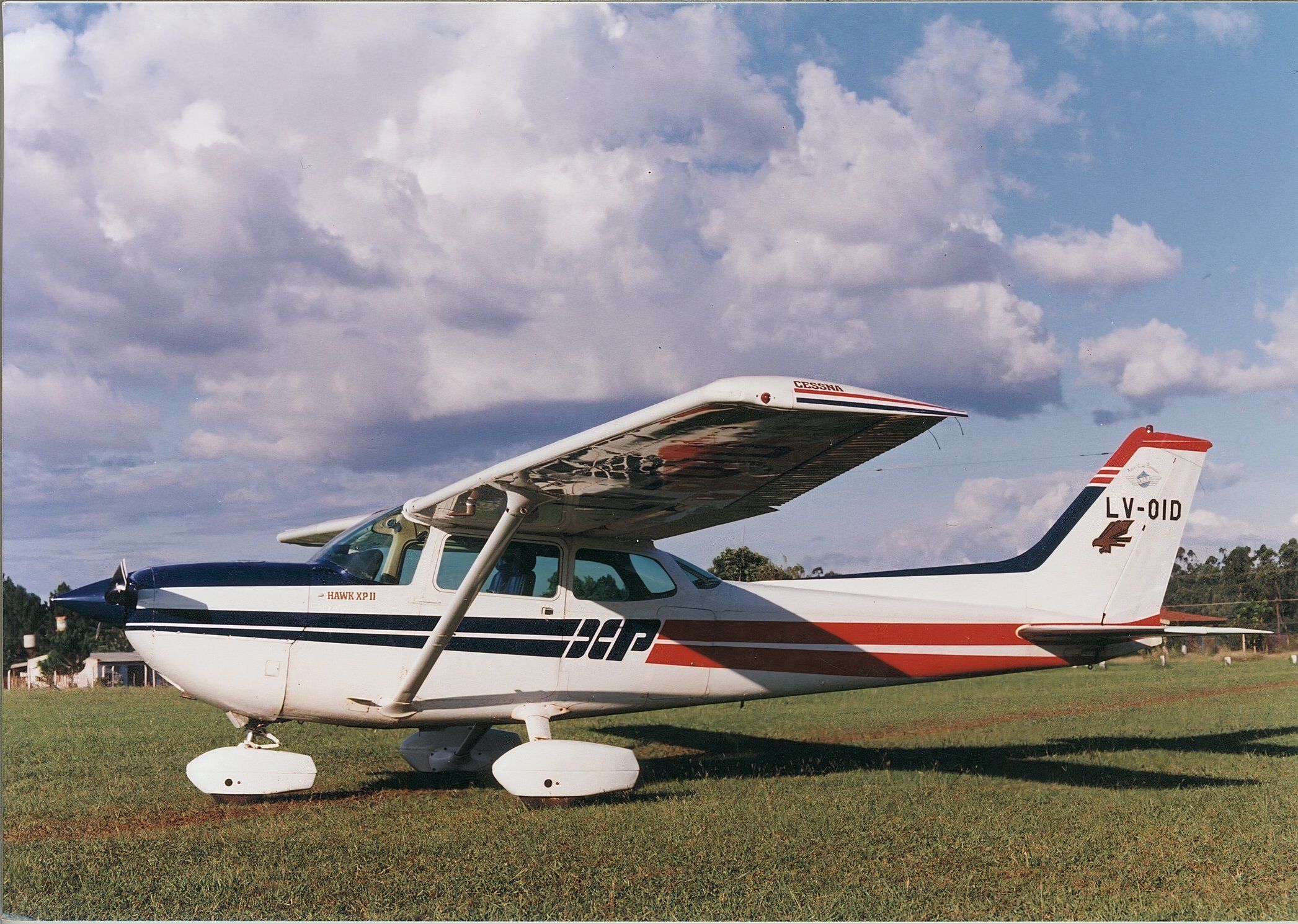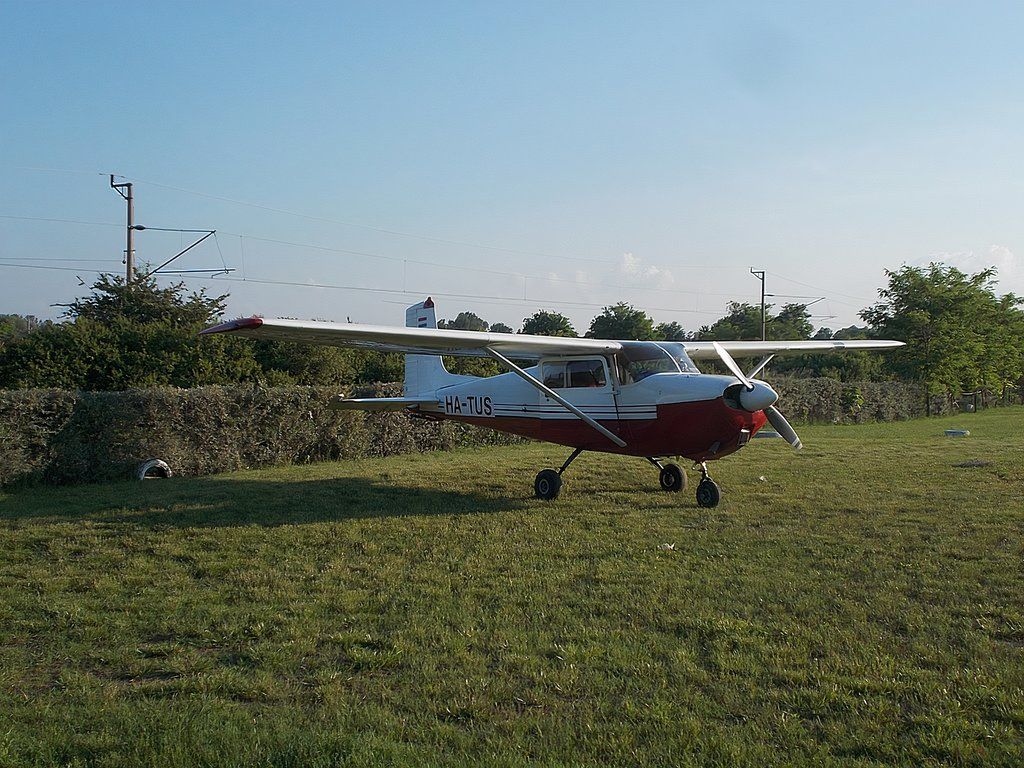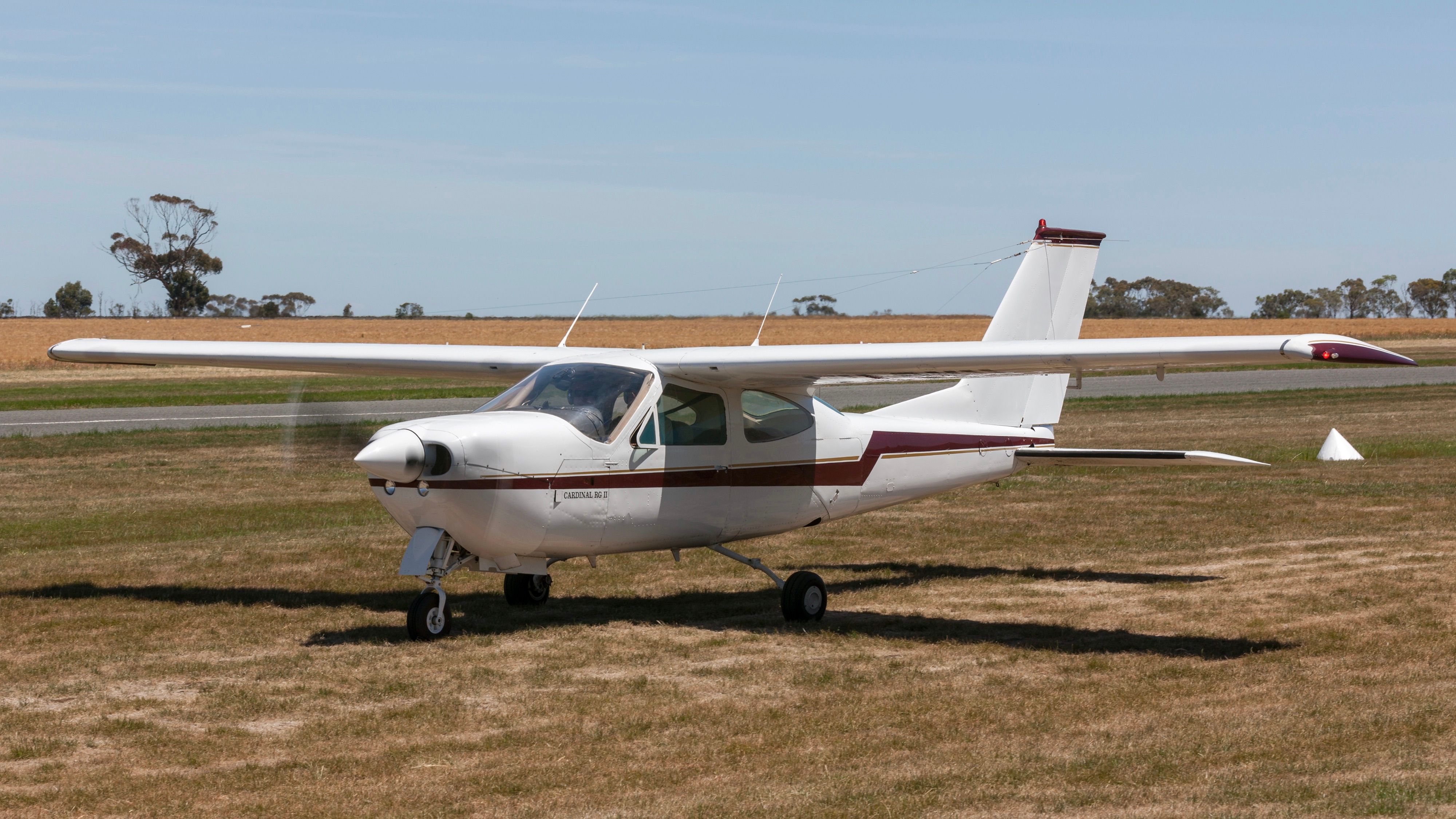The Cessna 170 series encompasses five distinct aircraft models (counting the 172XP) that played significant roles in Cessna’s lineup of single-engine, high-wing aircraft. These models are the Cessna 170, 172, 172XP, 175, and 177. Let’s take a look at each model and its variants:
1
Cessna 170
The postwar private flying boom spawned the revered Cessna 170.
Photo: Ryan Fletcher | Shutterstock
Cessna rolled out the 170 in 1948 as a four-seat advanced development of the popular Cessna 140. It initially featured a metal fuselage and tail with fabric-covered constant-chord wings, powered by a 145 hp Continental C145-2 engine.
C-170 variants include:
- 170: The original model, introduced in 1948 with fabric-covered wings and a “V” wing strut.
- 170A: Introduced in 1949 with all-metal wings, a single strut, and a dorsal fin.
- 170B: Introduced in 1952 with modified Fowler flaps, new wing design, and other refinements.
- 170C: A single prototype built in 1954 with a redesigned squared vertical stabilizer, later converted back to 170B standard.
The Cessna 170 remained in production until 1956, with a total of 5,174 units built. Of the total number manufactured, somewhere between 2,300 and 4,100 Cessna 170 are still on the FAA registration roster.
2
Cessna 172 Skyhawk
The 172 Skyhawk is the most-produced aircraft in general aviation history.
Photo: Noah Cooperman | Simple Flying
The Cessna 172 Skyhawk, introduced in 1955, is arguably the most successful aircraft in history. Cessna designed the plane as a tricycle landing gear variant of the Cessna 170. Key features and variants include:
- The initial model had a straight aft fuselage and tall landing gear legs.
- Cessna introduced the 172A in 1960 with revised landing gear and swept-back tail fin.
- In 1963, the 172D introduced the lowered rear deck, allowing an aft window, marketed as “Omni-Vision.”
- Cessna curtailed production of the Skyhawk in the mid-1980s due to the economy but resumed in 1996 with the 172R Skyhawk.
- 172S Skyhawk SP debuted in 1998 with a more powerful engine.The Cessna 172 has been in continuous production since 1956, with over 44,000 units built. It is the most-produced general aviation aircraft.
Because the Cessna 172 is more versatile than the smaller Cessna 150/152 and is popular with flight schools, more pilots have received training in it than any other aircraft type.
3
Cessna 172 Hawk XP
The 131 kt Cessna 172 Hawk XP flies like a mini Cessna 182.
Photo: Wikimedia Commons
The 172 Hawk XP is denoted separately from the ubiquitous standard 172 Skyhawk because, in a sense, it is an entirely different airplane. The significant upgrades were the fuel-injected Continental IO-360K 195 hp (derated from 210 hp) engine and a two-bladed Hartzell constant-speed propeller.
The Hawk XP entered production in 1977 and continued until 1981. It was manufactured by Cessna Aircraft Company in Wichita and under a strategic partnership with Reims Aviation in France. Cessna/Reims produced 1,450 Hawk XP 172s.
The 172XP featured a fuel-injected Continental IO-360-K engine (later IO-360-KB) derated to 195 horsepower.
The Hawk XP came equipped with a two-bladed, constant-speed propeller, unlike the standard 172’s fixed-pitch propeller. This design upgrade made a big difference in performance.
This feature made the 172XP more similar in some respects to larger Cessna models like the 182, which also used constant-speed propellers.
The XP model could cruise at 131 knots (243 km/h), considerably faster than the standard 172. It also had improved performance characteristics, including better climb rates and higher payload capacity.
The maximum takeoff weight increased to 2,550 lb, compared to 2,300 lb for standard 172s of that era.
The 172XP was essentially a factory-built high-performance version of the 172, offering performance closer to that of a Cessna 182 but in the familiar 172 airframe.
The Cessna 172 Hawk XP’s performance increase over the standard 172 Skyhawk was so significant that the U.S. Forest Service allowed contractors to use it for forest patrols in the “high and hot” western national forests.
4
Cessna 175 Skylark
A spritely performer, but with a potentially problematic geared engine.
Photo: Wikimedia Commons/Globetrotter19
The Cessna 175 Skylark emerged in 1958 as a more powerful variant of the 172. It featured a geared engine, which set it apart from its siblings. Key points:
- Powered by a 175 hp Continental GO-300 engine.
- Produced from 1958 to 1962.
- Total production of 2,106 units.
5
Cessna 177 Cardinal
The sleek cantilever-wing Cardinal looked fast but lacked performance.
Photo: Ryan Fletcher | Shutterstock
Cessna released its new 177 Cardinal with great fanfare in 1968 as a potential replacement for the 172. It was futuristic in appearance. The airplane featured a cantilever wing and a stabilator instead of the traditional elevator. Notable aspects include:
- The initial model was (significantly under-) powered by a 150-hp engine.
- Later models were equipped with a 180 hp engine.
- Produced from 1968 to 1978.
- Total production of 4,295 units.
|
Model |
First Flight |
Production Run |
Number Built |
Key Features |
|
170 |
1948 |
1948-1956 |
5,174 |
Conventional landing gear, fabric wings (early models) |
|
172 |
1955 |
44,000+ |
Tricycle landing gear, all-metal construction |
|
|
172XP |
1977 |
1977-1981 |
1,450 |
Continental IO-360 195 hp engine, constant-speed propeller |
|
175 |
1958 |
1958-1962 |
2,106 |
Geared engine, based on 172 airframe |
|
177 |
1968 |
1968-1978 |
4,295 |
Cantilever wing, stabilator. Also, a retractable-gear variant 177RG |
The Cessna 170 series represents a significant evolution in general aviation aircraft design, from the conventional gear 170 to the iconic 172 Skyhawk and the sleek 177 Cardinal. Each model brought innovations and improvements, catering to different segments of the private aviation market. The enduring success of the 172 highlights the value of timeless aircraft design and the series’ impact on aviation history.

